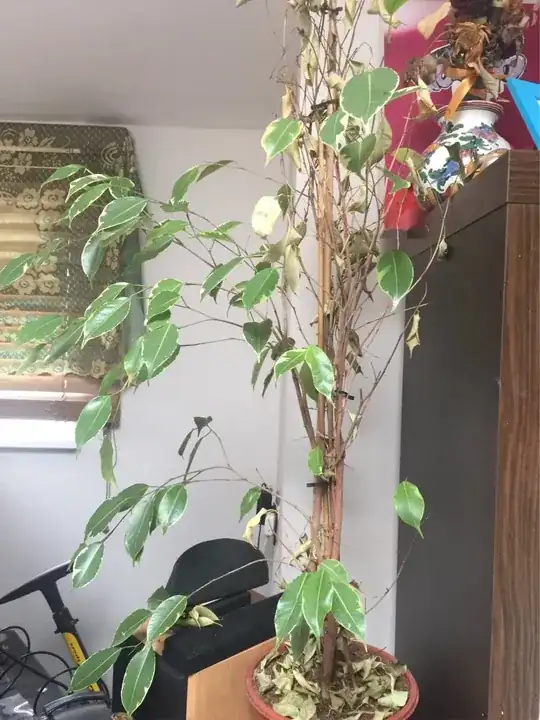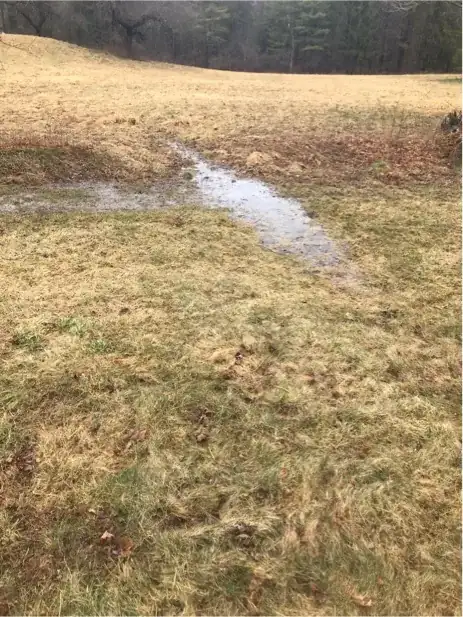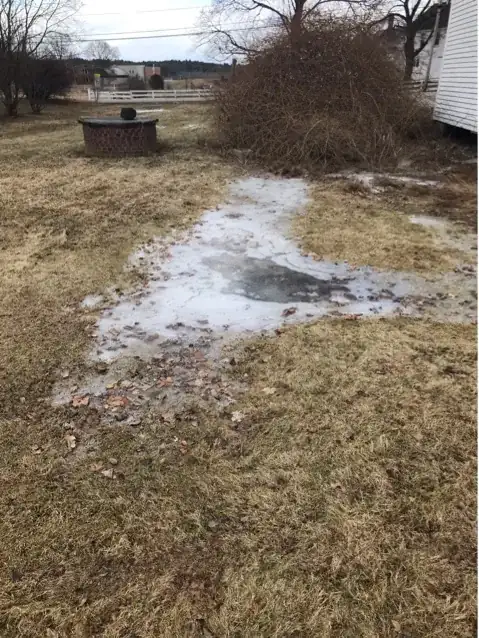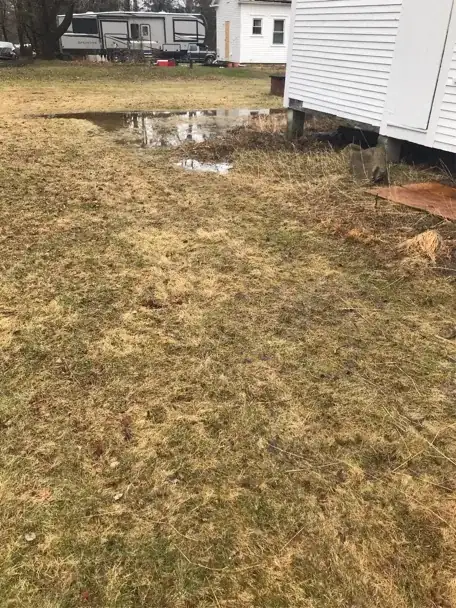So my backyard is showing some heavy pooling issues. I am in Southern Maine, USA
The lowest point (picture 1) is, unfortunately pretty close to the garage pier foundation, and when the water pools it includes two of the pillars.
My thought is to dig out an area where Picture 3 shows the center of the swale and digging out to the left to move the water away from the building and provide an additional feature to the landscape. This would also involve backfilling some of the area nearest the building to ensure the water is moving away.
1) Would a solution be to dig out an area to be a pond (either a retention basin or a infiltration basin - Link: Nomenclature reference ), and put in a small channel system to move all the water from the other pictures spot into it?
2) The lowest point is also near an out-of-use dug well. Would this cause any additional obstacle? Can you incorporate a dug well into a pond?
Some comments asked about the well. The dug well is the brick structure in picture 1 and is out of use. My neighbors and I all used deep drilled wells to pull from the lower aquifer for our water supply. We also all have personal septic tanks and leach fields.
The land behind the house is a four acre field, but due to the mound for the septic leaching, the slop declines towards the yard, causing the natural swales to form.
I hope to refine the question, perhaps with a little feed back because I am out of my milieu.



